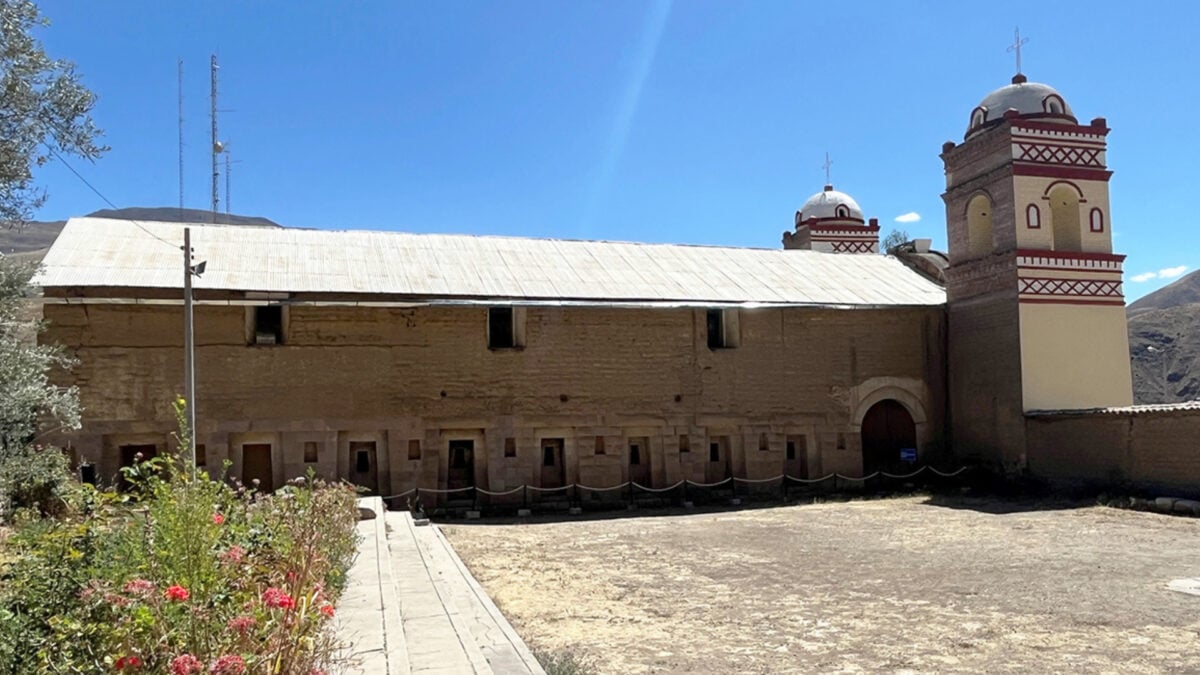
Nestled in the remote Peruvian town of Huaytará, the Church of San Juan Bautista conceals a fascinating secret. Beneath its structure lies a unique Incan edifice known as a carpa uasi, which prioritized an unexpected feature over stability. This three-walled construction has piqued the interest of researchers, who are now investigating its acoustic properties, shedding new light on the importance of considering more than just visual aspects when exploring the remnants of ancient civilizations.
While the Incan Empire is renowned for the iconic 15th-century citadel of Machu Picchu, a team of researchers is delving into the sonic characteristics of the carpa uasi, a one-of-a-kind Incan structure likely dating back to the same era. Their research highlights the significance of examining beyond the surface level, literally, when tracing the footsteps of bygone cultures.
A three-walled building
According to Stella Nair, associate professor of Indigenous arts of the Americas at the University of California, Los Angeles, “We’re exploring the possibility that the carpa uasi may have amplified low-frequency sounds, such as drumming, with minimal reverberation.” As stated in a university statement, “With this research, for the first time, we’ll be able to tell what the Incas valued sonically in this building.” This innovative approach may uncover new insights into the sonic preferences of the Incas.
The Inca civilization, a pre-Hispanic empire that flourished in the 15th and early 16th centuries, stretched along South America’s western coast, from modern-day Ecuador to modern-day Chile, when the Spanish conquistadors arrived. The Inca Empire’s architectural legacy is a testament to their ingenuity and craftsmanship.
The carpa uasi, meaning “tent house,” features a unique three-walled structure, potentially designed to direct sound, like drumming, toward the opening and beyond. This distinctive design may have been intentionally built to amplify sound and music, highlighting the importance of audio in Inca architecture.
Nair explained, “Many people are impressed by Inca stonework, but that’s just the surface level. The Incas were also concerned with ephemeral, temporary, and impermanent aspects, including sound, which was deeply valued and played a crucial role in Andean and Inca architecture. The builders may have compromised on stability to achieve the desired acoustic effects, demonstrating the significance of sound in their culture.”
The importance of sound
Although researchers have long been aware of the building, Nair and her colleagues may be the first to recognize its potential for sound magnification. As the only known surviving carpa uasi, it has endured for 600 years, thanks to the stabilizing force of the church built on top of it. The team is currently developing a model to explain how sound would have propagated through the carpa uasi and its surroundings.
Nair concluded, “Sound studies are crucial, as we tend to prioritize visual aspects when understanding the world and our past. However, our experience of life engages all our senses. By incorporating sound into our understanding of history, we can gain a more comprehensive and nuanced perspective on ourselves and our cultural heritage.” This innovative approach may revolutionize the way we perceive and appreciate the remnants of ancient civilizations.
Source Link





